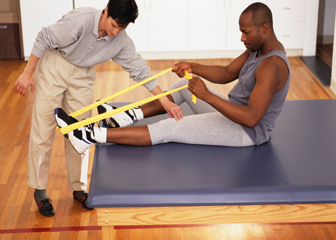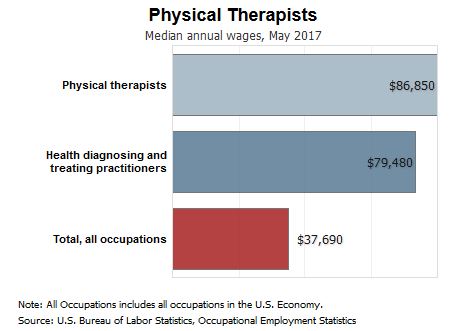
Physical therapists, sometimes called PTs, help injured or ill people improve their movement and manage their pain. These therapists are often an important part of rehabilitation, treatment, and prevention of patients with chronic conditions, illnesses, or injuries.
Duties
Physical therapists typically do the following:
- Review patients’ medical history and any referrals or notes from doctors, surgeons, or other healthcare workers
- Diagnose patients’ functions and movements by observing them stand or walk and by listening to their concerns, among other methods
- Develop individualized plans of care for patients, outlining the patients’ goals and the expected outcomes of the plans
- Use exercises, stretching maneuvers, hands-on therapy, and equipment to ease patients’ pain, help them increase their mobility, prevent further pain or injury, and facilitate health and wellness
- Evaluate and record a patient’s progress, modifying a plan of care and trying new treatments as needed
- Educate patients and their families about what to expect from the recovery process and how best to cope with challenges throughout the process
Physical therapists provide care to people of all ages who have functional problems resulting from back and neck injuries; sprains, strains, and fractures; arthritis; amputations; neurological disorders, such as stroke or cerebral palsy; injuries related to work and sports; and other conditions.
Physical therapists are educated to use a variety of different techniques to care for their patients. These techniques include exercises; training in functional movement, which may include the use of equipment such as canes, crutches, wheelchairs, and walkers; and special movements of joints, muscles, and other soft tissue to improve movement and decrease pain.
The work of physical therapists varies by type of patient. For example, a patient working to recover mobility lost after a stroke needs different care from a patient who is recovering from a sports injury. Some physical therapists specialize in one type of care, such as orthopedics or geriatrics. Many physical therapists also help patients to maintain or improve mobility by developing fitness and wellness programs that encourage healthier and more active lifestyles.
Physical therapists work as part of a healthcare team, overseeing the work of physical therapist assistants and aides and consulting with physicians and surgeons and other specialists.
















